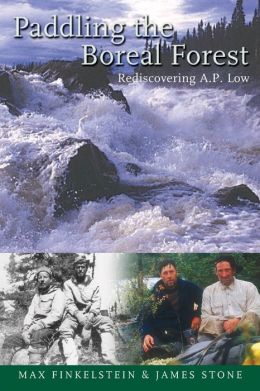Illus.credit: barnesandnoble
Low left us little about his adventures. He lived in the day when the canoe was a tool, not a recreational vehicle. The canoe was how families moved about to follow migratory herds, how they hunted and fished, how they moved supplies into the wilderness, and how they moved furs out. For Low, the canoe transported him to find rivers, lakes, branches, mineral deposits, and reduce them to reliable maps and reports. The goal of our two authors was to follow and duplicate some of Low’s trips, and by their experience, tell their adventures and Low’s simultaneously. In their part of the world, except for what is destroyed by forest fires, little changes in hundreds of year.
Part of the appreciation of Low and his accomplishments is getting a glimpse of his Herculean determination and perseverence. At one point he had to use a sailing fishing boat for mapping. It was 28 feet long and weighed between one and two tons, and was capable of carrying two tons of provisions, two canoes, and six men. Like his canoe, this sailboat also had to be portaged across land---on rollers---through bog, rugged rocky topography, impenetrable forest, with the men being almost always soaked from continual rain. When the authors went to research Low’s field notes, century-old dried corpses of black flies fell from between the pages. In 1888, while doing the Big and Clearwater Rivers alone, Low performed 184 portages with all the boats, supplies, and surveying equipment. When there weren’t flies, they often endured temperatures between 51 and 101 degrees below zero. If nothing else, these accounts will help keep what you are experiencing on your next canoe trip in proper perspective.

No comments:
Post a Comment